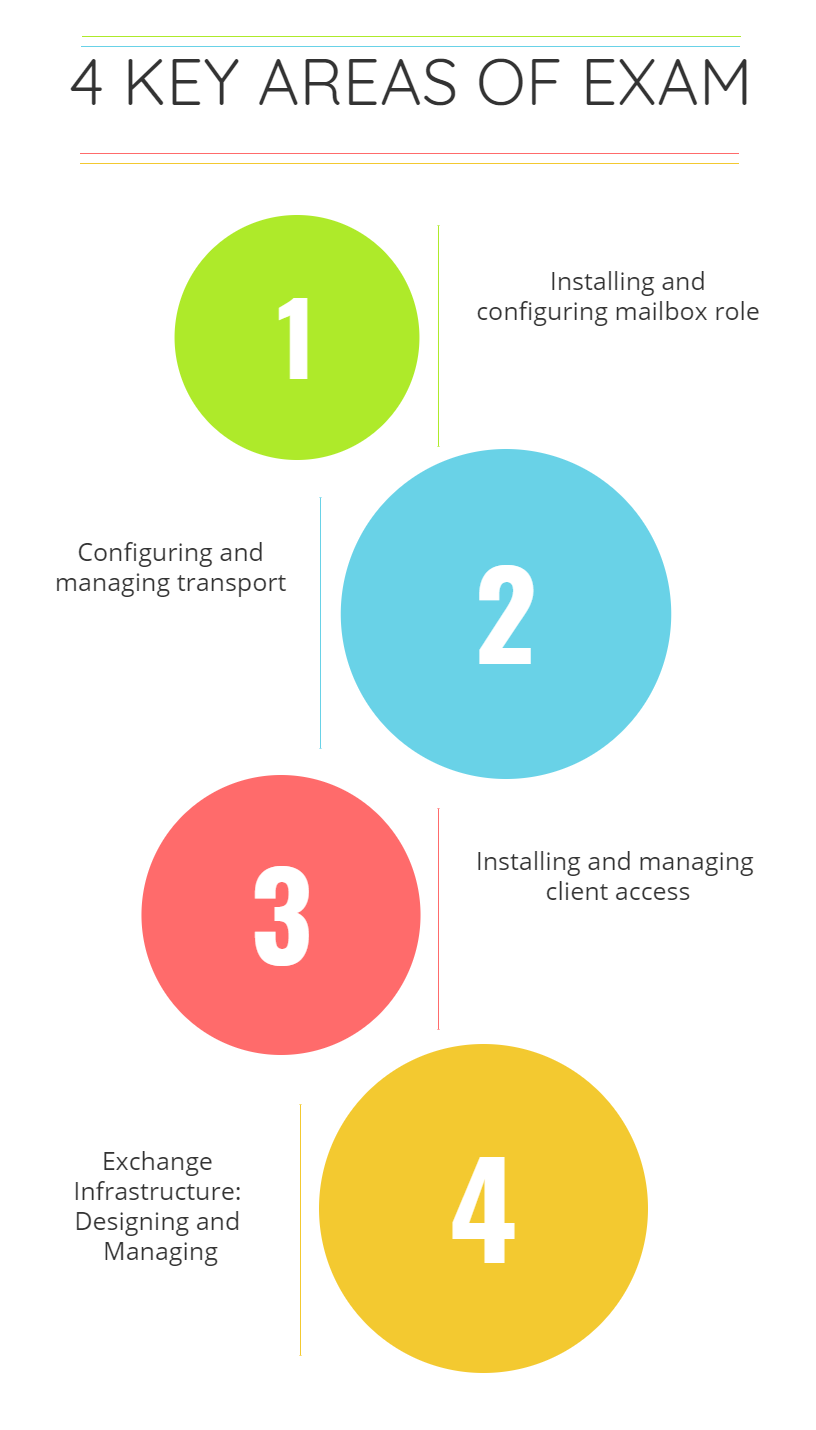Deploy and Manage Microsoft Exchange Server 2013
The module helps you to understand prerequisites, requirements, deployment, and management of Exchange Server 2013.
- Describe requirements and prerequisites for Exchange Server 2013
- Perform Deployment and management of Exchange Server 2013
Plan and Configure Mailbox Servers
The topic explains how to plan and configure mailbox server role.
- An introduction to Mailbox Server role
- Plan deployment for a Mailbox server
- Techniques for configuring mailbox servers
Managing Recipient Objects
This module describes how to manage address policies, address lists and recipient objects in Exchange Server 2013.
- Manage Exchange Server 2013 mailboxes
- Execute public folder mailboxes
- Maintain exchange recipients
- Implement address policies and lists
Plan and Deploy Client Access Servers
In this module, planning and implementing Client Access Server role in Exchange Server 2013 is covered.
- Strategies to plan Client Access Server Deployment
- Describe how to manage Client Access Services
- Implementation of client access server role
Configure Messaging Client Connectivity
Understand how to plan and configure Microsoft Outlook web app and mobile messaging in Microsoft Exchange Server 2013.
- Understand role of Client connectivity to Client Access Server
- Mobile Messaging: Design and Configure
- Install and execute Outlook Web App
- Internet access for Client Access server
Plan and Implement High Availability
The module describes the high availability features into Exchange Server 2013 and other factors affecting it.
- Understand High availability on Exchange Server 2013
- Configure highly available Client Access servers and mailbox databases
Plan and Configure Message Transport
The module covers how to design and configure message transport in Exchange Server 2013 organization.
- Explain Message Routing and Transport
- Design and Install message transport
- Maintain transport rules
Plan and Implement Disaster Recovery
In this module, the design, implement disaster mitigation, and recovery in Exchange Server 2013 is discussed.
- Plan for disaster mitigation
- Plan Exchange Server 2013 backup and recovery
- Implement Exchange Server 2013 backup and recovery
Plan and Implement Administrative Security and Auditing
The module helps you to understand role-based access control (RBAC) permissions and configure audit logging.
- Execute Role-Based Access Control
- Describe how to implement Audit logging
Design and Configure Message Hygiene
The module describes how to plan messaging security and implement antivirus as well as an anti-spam solution for MS exchange server 2013.
- Describe how to plan messaging security
- Strategies to Plan and Implement Antivirus and Anti-spam solution for Exchange Server 2013
Maintain and troubleshoot Microsoft Exchange Server 2013
Understand how to monitor, maintain and troubleshoot Exchange Server 2013 environment.
- Understand Monitoring of Exchange Server 2013
- Maintain and Troubleshoot Microsoft Exchange Server 2013





